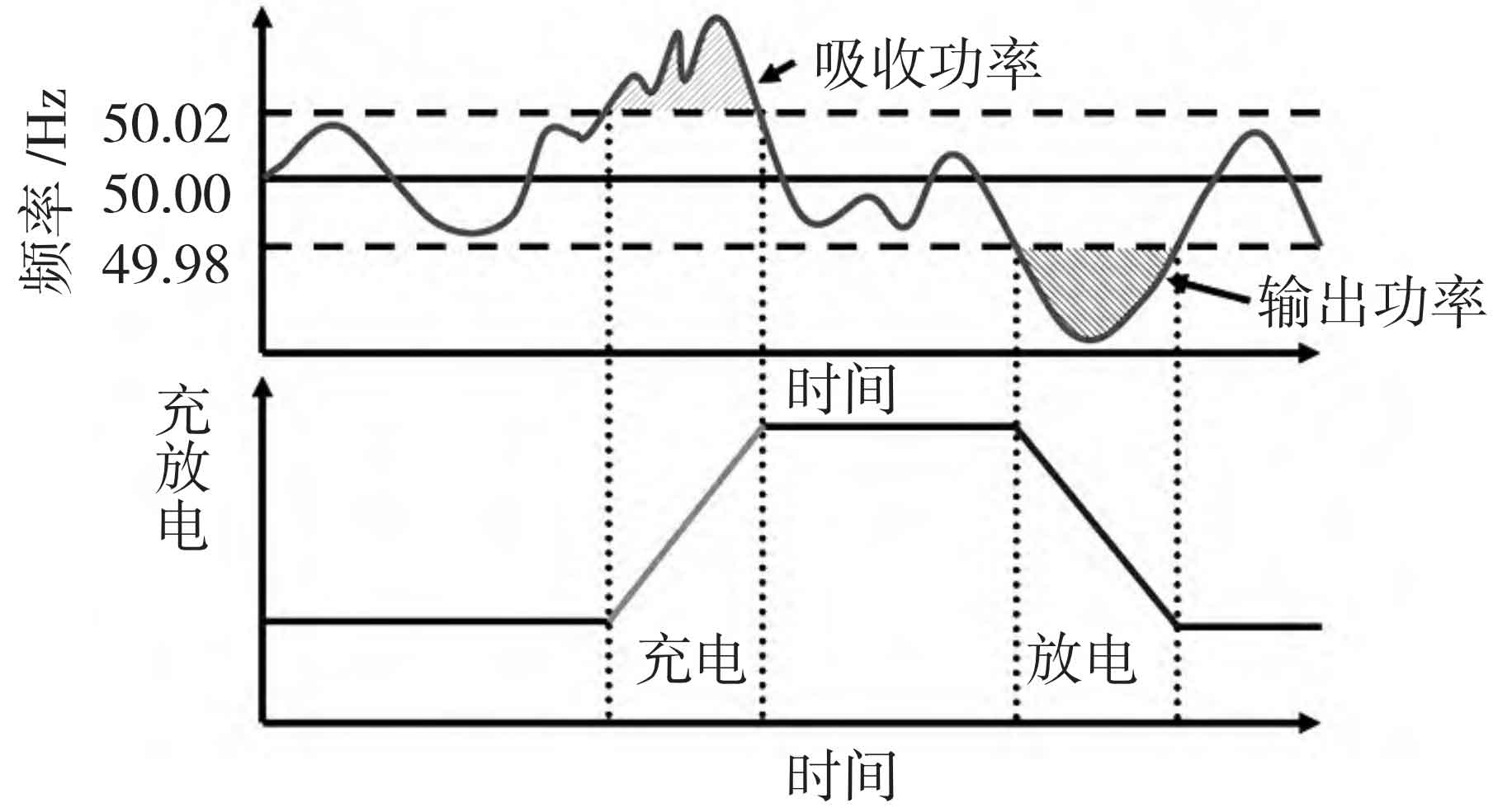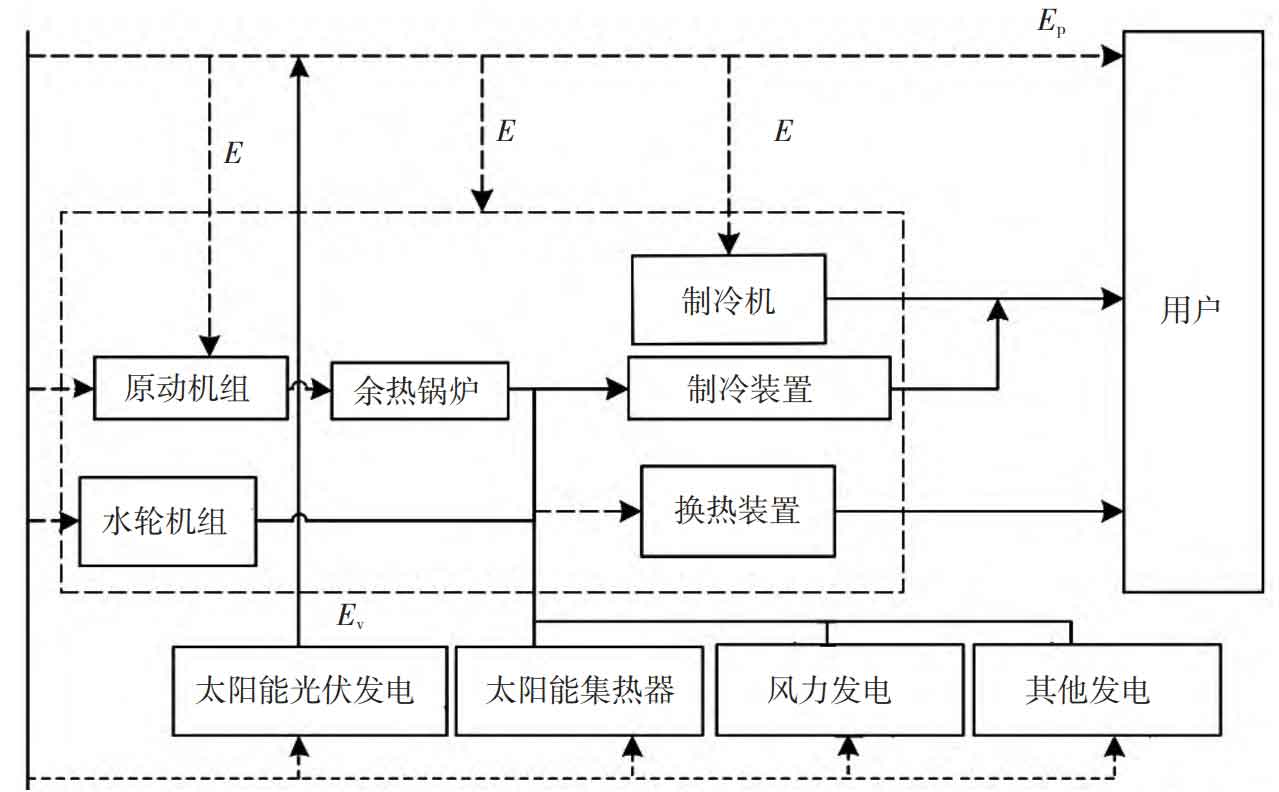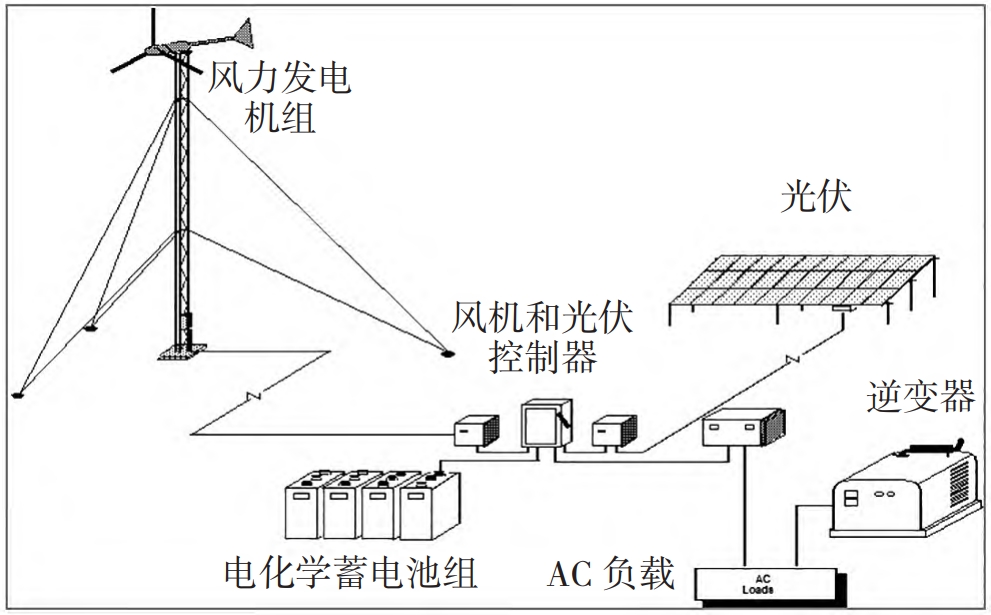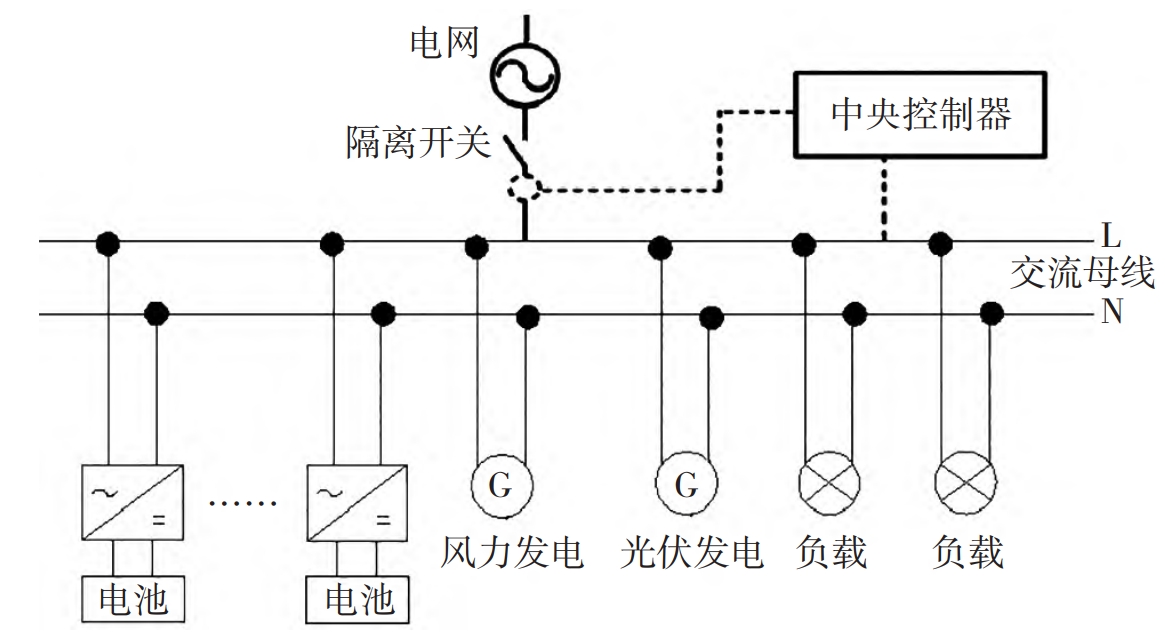Since the beginning of the 21st century, with the continuous increase in the scale of new energy generation such as wind power and photovoltaic, as well as the decrease in the cost of power lithium batteries, in-depth research and exploration have been conducted both domestically and internationally around electrochemical energy storage. Electrochemical energy storage refers to the use of various secondary batteries for energy storage, currently dominated by lead and lithium batteries. It has the advantages of fast response speed, high charging and discharging efficiency, low cost, and mature technology, making it easy to adjust the load of the power grid. According to reports on China’s energy development, new energy generation will account for 50% of the newly added electricity generation by 2040. As of 2021, the cumulative composite growth rate of global electrochemical energy storage has reached 35%, making it the fastest developing energy storage technology in recent years, including electric vehicles.
Electric energy storage technology is mainly divided into several categories: physical energy storage, electromagnetic energy storage, and electrochemical energy storage. Physical energy storage includes pumped energy storage and compressed air energy storage, while electromagnetic energy storage includes supercapacitor energy storage and superconducting electromagnetic energy storage. Among the above energy storage methods, pumped storage is currently the most mature and economical energy storage method. It is widely used for peak shaving and frequency regulation in power systems by storing water at high altitudes. However, due to geographical limitations and long construction cycles, it is not suitable for storage of distributed new energy energy. The compressed air method for energy storage breaks free from geographical constraints by compressing air into storage tanks. However, the energy conversion efficiency of the entire system is still at a relatively low level, only between 50% and 70%, which to some extent affects the economy of energy storage. With the development and cost reduction of power lithium battery technology, electrochemical energy storage has the advantages of high energy storage efficiency, less dependence on external environmental and geographical conditions, and is more mature, less economic cost, and wider application range compared to electromagnetic energy storage technology. Therefore, electrochemical energy storage has better development prospects when considering the energy storage process in new energy grid structures such as wind power and photovoltaic.
Based on the above background, taking the new urban power grid as the application scenario, an analysis was conducted on the advantages, disadvantages, and application scenarios of different energy storage technologies. An implementation plan using electrochemical energy storage was proposed, taking into account the consumption of wind power and photovoltaic energy. Through economic benefit cost analysis, the proposed optimization plan has certain effectiveness and practicality.
1.Necessity analysis of the construction of urban power grid energy storage system
1.1 Power System Frequency Modulation
With the increase of wind power and photovoltaic access capacity, renewable energy can be used to compensate for the frequency regulation capacity of power generation units, regulate the dynamic balance between the power generation and user sides, and thereby reduce the burden of frequency regulation in the power system. However, the instability and intermittency of wind and solar energy will directly affect the stability of system frequency regulation. Therefore, establishing an energy storage system will effectively improve and enhance the frequency regulation performance of the power system, Reasonably allocate the charging and discharging time using energy storage devices, fully utilize the characteristics of absorbing power during charging and outputting power during discharging, maintain the frequency of the power system within a reasonable fluctuation range, and achieve frequency modulation of the power system. The vertical axis of charging and discharging in the figure represents the two process states of charging and discharging, as shown in Figure 1.

1.2 Smooth suppression of renewable energy
Renewable energy mainly includes wind power, solar energy, geothermal energy, tidal energy, and biomass energy. The fundamental characteristic of these energy sources is their strong intermittency and volatility, which makes it impossible to develop output plans in advance like hydropower and thermal power generation. When connecting to and exiting the power grid, there is a certain degree of fluctuation and impact on the power system. The application of energy storage technology will make up for special situations such as no light at night and no wind in wind power generation, Thus, the smooth suppression of fluctuations in the output of renewable energy sources such as wind and solar energy can continue to provide power to users.
1.3 Peak shaving and valley filling to reduce urban electricity peak valley difference
In recent years, with the rapid development of urbanization and manufacturing in China, the peak valley difference between daytime and nighttime electricity demand in cities has become increasingly large. If relying solely on thermal power units for peak shaving, it will inevitably result in excessive idle capacity of the system during peak hours, leading to an increase in system costs and a decrease in economic efficiency. At the same time, excessive thermal power plants will increase carbon emissions, which is not conducive to achieving the goal of energy conservation and emission reduction in urban electricity consumption. Therefore, researching and exploring an advanced energy storage method can absorb and store the electricity during the low load period of the power grid, and then release the electricity through discharge during the peak load period of the power grid to meet the demand of the peak electricity consumption. This can achieve peak shaving and valley filling in the power system, reduce the peak valley difference of urban electricity consumption, and scientifically achieve the ultimate goal of energy conservation and emission reduction in urban electricity consumption.
2.Design of wind solar complementary energy consumption system
2.1 Distributed Energy System Model
The traditional energy distribution system in China mainly uses boiler combustion heating and pumped storage to provide users with electricity, heat, and cooling loads. The user’s electrical load is directly provided by the power grid, the thermal load is generated by the combustion of fuel in the boiler and steam is provided by the heat exchange equipment, and the cooling load is provided by the electric energy driven refrigeration machine. With the continuous development of technology, the energy structure has also undergone significant changes, with the emergence of multiple energy coexisting structures such as waste heat power generation, wind power generation, solar power generation, tidal power generation, etc. The proposal of this multi energy complementary energy system structure can effectively improve the discontinuity problem of wind and photovoltaic energy, thereby suppressing the fluctuation of its output and overcoming the shortcomings of instability and discontinuity. A typical distributed energy system structure includes a combination of wind power, solar power, waste heat boilers, biomass power, and other energy sources, forming a distributed energy system model. The structure is shown in Figure 2.

According to energy balance, the energy balance relationship of distributed systems is as follows:

In the formula: Ev is the electrical energy provided by the distributed power grid; E represents the electrical energy consumed by auxiliary equipment such as refrigeration and heating; Ep refers to the consumption of electricity by users, such as lighting electricity.
2.2 Analysis of Characteristics of Different Types of Energy Storage Technologies
According to the principles of energy storage technology, energy storage technology is mainly divided into three categories: mechanical physical energy storage (such as pumped energy storage, flywheel energy storage, and compressed air energy storage), electromagnetic energy storage (such as capacitors, supercapacitors, and superconducting magnetic energy storage), and electrochemical energy storage (such as lead-acid batteries, nickel cadmium batteries, and lithium-ion batteries). The following will analyze their technical features separately.
1) Mechanical energy storage technology. It is a technology that stores energy in the form of kinetic or potential energy, mainly including pumped energy storage, flywheel energy storage, and compressed air energy storage. Pumped energy storage refers to the process of using electricity to pump water from low to high during low load periods. When electricity is high load, water is released and potential energy is used to drive the electric motor set to generate electricity. Due to the inertia of water, pumped energy storage has a slower response speed to load and is greatly affected by geographical environment. Flywheel energy storage is an energy storage technology that stores kinetic energy into rotating mechanical devices during low load periods, and releases it during high load periods. It has the advantages of fast energy conversion speed and high power density, but is limited by mechanical materials and technology, and is mainly used in the urban rail transit industry. Compressed air energy storage is an energy storage technology that uses excess electrical energy to compress air into a designated container, which is then released and converted into electrical energy during periods of high power load. Compared with traditional batteries, compressed air tanks have a longer service life, but they have drawbacks such as low thermal energy management and energy density, making them difficult to miniaturize and unsuitable for distributed energy storage such as microgrids.
2) Electromagnetic energy storage technology. Ordinary capacitor energy storage is the process of storing charges on two metal plates separated by dielectric materials. It has the advantages of long life cycle and fast discharge response time, but low power density. Supercapacitors, also known as double-layer capacitors, differ from ordinary capacitors in that they use porous carbon made of two layers of metal wires to form dielectric materials. Therefore, they have the advantage of short charging and discharging time at high rated power, and are widely used in the field of electric vehicle starting power. The disadvantage is that the energy storage density is lower than that of ordinary chemical batteries, and the battery life is insufficient. Superconducting electromagnetic energy storage is the use of the zero resistance characteristic of superconductors to store electrical energy in superconducting coils, and then return electromagnetic energy to the power grid or load when needed. It has a simple structure and does not require rotating mechanical components or sealing issues. Therefore, it has advantages such as long equipment life, high energy storage density, and fast response speed. However, due to the expensive superconducting materials and low-temperature refrigeration systems, it is difficult to commercialize in the short term.
3) Electrochemical energy storage technology. Electrochemical energy storage, also known as battery energy storage, is a mature technology widely used in various fields of electric energy storage. According to the characteristics of battery materials, it mainly includes lead-acid batteries, nickel cadmium batteries, and lithium-ion batteries. Lead acid batteries are currently the most widely used batteries due to their low cost. They can be frequently charged and discharged, but there are drawbacks such as a sharp decrease in battery life if discharged too deeply, and poor safety performance [8-9]. Relatively speaking, lithium-ion batteries are highly favored due to their high energy density, high charging and discharging efficiency, and long service life. However, their development and use have been limited by the need for special packaging requirements and technical costs such as overcharging protection. However, in recent years, with the development of technology, the price of lithium-ion batteries has rapidly decreased, and they have received widespread attention and research, Taking lithium batteries as a key research direction for electrochemical energy storage, conducting cost-benefit analysis with other options under the consideration of wind and solar energy consumption scenarios to make the optimal choice.
2.3 Structural design of wind solar complementary energy storage unit
Based on the above energy storage technology analysis, power lithium-ion batteries have advantages such as high energy density, guaranteed reliability and safety. In recent years, with the rapid development of lithium-ion battery technology, their cost has decreased by nearly 80% compared to 2010, and they have been widely used in the field of energy storage in the power system. As of the end of 2020, the total installed capacity of renewable energy generation in China has reached 720 million kW, including 275 million kW of wind power installed capacity, The installed capacity of photovoltaic power generation is 240 million kW, while other installed capacities are 2.05 kW. From the perspective of renewable energy generation structure, wind and solar power still maintains a high growth stage. However, due to the fluctuation of wind and solar power generation due to the influence of weather and season, which does not match the stable electricity demand of the power grid, it is easy to cause significant fluctuations in grid frequency and power quality. In order to meet the requirements of user side power quality, wind and light abandonment often occur, leading to a decrease in the utilization rate of wind and solar energy. Therefore, energy storage system technology can effectively alleviate wind and light abandonment.
The wind solar complementary microgrid system will use lithium batteries with electrochemical energy storage as energy storage units. The wind turbine and solar power generation panel will be connected to the AC bus through a central controller, and the electrochemical battery pack will be connected to the AC bus through a bidirectional inverter to ensure the balance of system energy supply and demand. When the power grid is under low load at night, the voltage of the energy storage device will be low. In this case, the central controller will put the inverter into charging mode, Charge the battery for energy storage. On the contrary, when entering the high load of the power grid, the energy storage device discharges into the AC power grid to provide electrical energy for the load. In addition, a circuit breaker is also installed between the power grid and the AC bus. When encountering a power outage in the power grid, the circuit breaker automatically cuts off the power grid interface, and the off grid inverter supplies power to the local load. Wind and solar energy works in offline mode. When the power grid resumes power supply, the central controller automatically interlocks with the grid and enters a grid connected state. The structure of its wind solar complementary DC bus system is shown in Figure 3.

Bidirectional energy storage inverters can achieve integrated operation between power supply and load. Through collaborative control with the main power grid, they can smoothly connect to the main power grid or operate independently, fully meeting users’ requirements for power supply reliability, power quality, and safety. The topology diagram of the microgrid system is shown in Figure 4.

3.Optimization and Benefit Analysis of Electrochemical Energy Storage System
At present, major industrial electricity users in various provinces in China have implemented a peak valley electricity price system. By increasing the daytime peak electricity price, reducing the nighttime low valley electricity price, guiding users to plan and use electricity reasonably, and ensuring the balanced supply of electricity by power companies, avoiding unnecessary losses caused by frequent startup and shutdown of some generator sets, and ensuring the safe and stable operation of the power system. Therefore, the use of energy storage for arbitrage of peak and valley electricity prices has become a reality. Users can choose to use energy storage devices to store energy during low periods, and use stored energy during peak periods to avoid excessive use of high priced grid energy, which provides considerable profit space for enterprises. At the same time, the introduction of energy storage systems can also provide a certain buffer for new energy power stations such as wind and photovoltaic to connect to the grid, playing a smooth inhibitory role in wind and solar output and energy scheduling, improving the unstable power of new energy generation to a certain extent, thereby improving the quality of power supply, enhancing the schedulability and utilization rate of new energy generation.
The cost and peak valley price of energy storage systems directly determine the cost-effectiveness of user side energy storage. Assuming that the enterprise produces 300 days per year, according to the calculation formula: static investment payback period=(battery capacity × Cost of one-time unit capacity investment/(daily peak electricity consumption) × Peak valley electricity price difference)/300, taking the peak valley price difference of 0.82 yuan/kWh between 1~10 kV voltages in Chongqing in 2022 as an example, different energy storage technologies are used to calculate their respective investment recovery costs. From the performance analysis results of energy storage technology, it can be seen that mechanical and physical energy storage technology is not suitable for energy storage in wind and solar energy storage systems. Electromagnetic energy storage technology is difficult to commercialize in the short term due to its high cost. Therefore, static investment period calculations and analysis are mainly conducted for common lead-acid batteries, nickel cadmium batteries, and lithium-ion electrons in electrochemical energy storage. The analysis results are shown in Table 1.
| Category | System cost/(yuan/Wh) | Energy density/(Wh/kg) | Charge discharge rate | Number of cycles/time | Static investment return/a |
| Lead-acid battery | 1.2 | 30-100 | 0.5 | 2000 – 4000 | 4.6 |
| Nickel cadmium battery | 1.3 | 110-130 | 0.9 | 2200 – 4000 | 5.1 |
| Lithium ion batteries | 1.5 | 120-150 | 3 | 3000 – 5500 | 5.8 |
From Table 1, it can be seen that the static investment payback period for using lead-acid batteries is the shortest, only requiring 4.6 years. In comparison, the investment payback period for lithium-ion batteries is the longest, at 5.8 years. However, from a comprehensive performance perspective, the energy density and charge discharge rate of lithium-ion batteries are better than lead-acid batteries and nickel cadmium batteries. With the development of lithium-ion battery technology, the system cost is expected to decrease to 1 yuan/Wh or less by 2025. At that time, the static investment payback period will be shortened to 3.9 years, and as retired electric vehicle batteries enter the stage of tiered utilization, the energy storage cost will further decrease.
4.Conclusion
In response to the significant fluctuations in grid frequency and power quality caused by the integration of wind and photovoltaic energy into the power grid, and the frequent occurrence of wind and solar abandonment, different energy storage schemes were analyzed from the perspective of energy storage technology, and the advantages of electrochemical energy storage in considering wind and solar energy consumption were obtained. A wind and solar complementary energy storage unit structure was designed, and a wind and solar complementary DC bus system structure scheme was proposed, Through investment payback period and performance analysis of different batteries in the electrochemical energy storage technology scheme, it was found that lithium electronic batteries have advantages such as high energy density, excellent charging and discharging rate, and good safety. Taking into account the potential cost reduction of lithium electronic systems in the future, it is recommended to adopt appropriate business models and fully utilize the cascading utilization methods of retired electric vehicle batteries, Jointly promoting the development of renewable energy industries such as wind and solar energy storage, but considering that electromagnetic energy storage technology also has significant advantages in the future, such as the rapid development of superconducting materials, and considering renewable energy storage technologies such as wind and solar energy consumption, further exploration is still needed.
